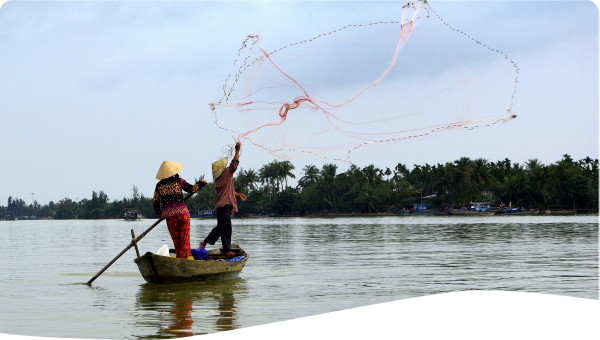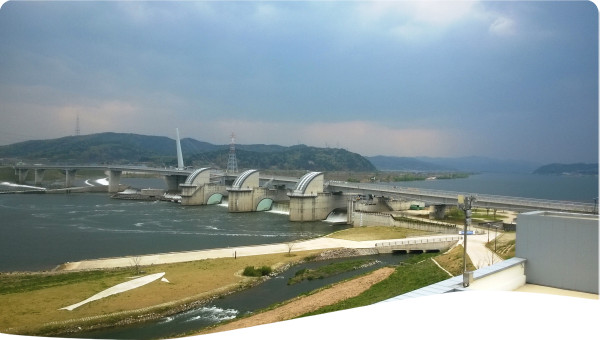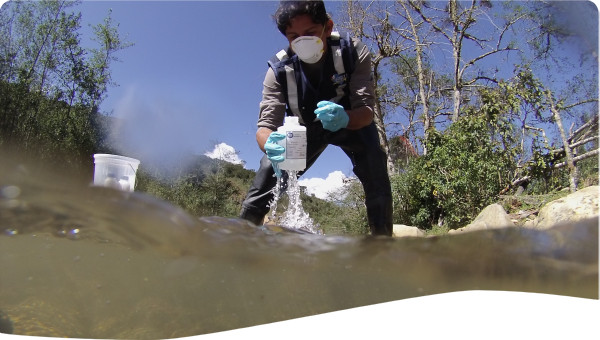 Tool -
Tool -
The concept of Valuing Water was developed to recognise and celebrate the wide array of economic, social, and environmental values which water brings to our societies (HLPW, 2017). The concept of Valuing Water is therefore much broader than the traditional approach which focuses on finding the economic worth of the resource. For that, environmental economist developed the notion of Total Economic Value (TEV), which is commonly used to assign monetary merits to both use and non-use values (Figure 1). Those interested in methodologies for evaluating the economic value of water through shadow pricing techniques should refer to (Tool D1.02).
Figure 1. Total Economic Value (TEV) Concept (Adapted from UNESCO, 2021).
Valuing Water thus represents a paradigm shift suggesting that the process of valuing water should and cannot be only limited to deriving monetary values. This implies seeing water as an “social” rather than an “economic” good, one that has ecological, societal, and intrinsic value (VWI, 2020). As opposed to economic methods for calculating the monetary value of water, there are no specific methodologies to capture the intrinsic value of water (UNESCO, 2021, 25). Consider, also, that spiritual, emotional, and aesthetic values of water can be described and qualified but not “calculated”. In that sense, while the economic worth of water services can certainly be evaluated, its ecological but also socio-cultural and religious functions cannot easily be quantified.
Reflecting the growing interest towards the Valuing Water concept, the UN Secretary-General and the World Bank Group President convened a High Level Panel on Water (HLPW) in January 2016. One of its aims was to develop a set of shared principles to motivate and encourage governments, business, and civil society to consider water’s multiple values and to guide the transparent incorporation of these values into decision-making. The 5 Valuing Water Principles that came out from the HLPW consultations are (HLPW, 2017):
- Principle 1. Identify and take into account the multiple and diverse values of water to different groups and interests in all decisions affecting water. Interconnections between human needs, social and economic well-being, spiritual beliefs, and the viability of ecosystems need to be considered.
- Principle 2. Conduct all processes to reconcile values in ways that are equitable, transparent, and inclusive. Trade-offs adapted to local and global changes will be inevitable, especially when water is scarce, and these call for sharing benefits amongst all those affected.
- Principle 3. Value, manage, and protect all sources of water, including watersheds, rivers, aquifers, associated ecosystems, and used water flows for current and future generations. Protecting sources, controlling, and preventing pollution together with addressing other pressures across multiple scales is an urgent task. Water is precious, fragile, and dangerous. It is the backbone to many human activities and has a potential to harm and even destroy societies if neglected and misused.
- Principle 4. Promote education and public awareness about the intrinsic value of water and its essential role in all aspects of life. This will enable broader participation, water-wise decisions, and sustainable practices across different areas ranging from spatial planning and city management to farming, industrial development, and domestic use.
- Principle 5. Ensure adequate investment in institutions, infrastructure, information, and innovation to realise the many different benefits derived from water and reduce risks. Concerted action and institutional coherence should harness new ideas, tools, and solutions while drawing on existing and indigenous knowledge and practices in ways that nurture the innovative leaders of tomorrow (Tools B4).
Several governments and initiatives have tried to implement the Valuing Water Principles in practice (see, e.g., Water Change Makers). Yet, the Principles have been criticised for being too theoretical and difficult to carry out. Here are few the of the key challenges that have been identified which hamper the application of valuing water principles in practice (VWI, 2020; Hellegers & Van Halsema, 2019; UNESCO, 2021):
- Values are not always characterised by impartiality and are not static: This is due to variability of stakeholders, who conceptualise values differently, as well as geographical peculiarities. This is aggravated by the globalised nature of economy when decisions are dominated by trade policies. Instability of values is linked to various political, economic, societal, and environmental changes, such as demand shifts and climate change threat.
- Commensurability of values is not always possible or is not subjective: Not all the values can be expressed in monetary terms despite it being a favourable approach or entry point for valuing water. For instance, public and private values of water differ in merit and scale, and commensuration of those may be merely a political act supported by vested interests (Tool B1.05).
- Presence of externalities: Water management decision often entails both positive and negative externalities at the same time. Those exist at various scales, which makes it difficult to compare in practice.
The Values and Water Governance Framework developed by Schulz et al. (2017) is a three-tier typology that can help actors adopt a value lens as part of their decision-making processes and thus overcome some of the above mentioned challenges. The Framework maps out the relationship between our water management decisions and the broader set of underlying values that are rooted in their governance and socio-cultural systems (Figure 2). To do that the Framework differentiates between three categories of water-related values:
- Fundamental values: These are values held at the societal level, such as those influenced by the culture, language, religion, etc.. These can include, for instance, advancement, cooperation, stimulation, sufficiency, involvement, curiosity, conformity, benevolence, hedonism, etc.
- Governance values: These are principles that structure and guide how institutions, policies, and overall politico-institutional governance systems function. These include, for example, equality, independence, competency, inclusivity, efficiency, capacity, agility, legitimacy, consistency, effectiveness, transparency, etc.
-
Assigned water values: These are about how water is being used and managed for achieving specific purposes in a given context, e.g., for agriculture, industry, drinking, sanitation, recreation, nature, fishing, etc.
Figure 2. A Conceptual Framework of Values and Water Governance (Adapted from Schulz et al., 2017)
The logic of this framework is that fundamental values (i.e. those held at the societal level) influence governance values (the guiding principles held by institutional systems), which in turn impact assigned water values (the way we allocate and deal with water for different purposes). Consider a politician who need to take a decision on basin management activities whose fundamental values are based on power and achievement. In terms of governance-related values, this politician probably leans towards efficiency and capacity. Ultimately, that decision maker is likely going to favour the economic usage of the water resources in the catchment (e.g. by building a dam for irrigation or agriculture) rather than investing in celebrating the environmental and intrinsic value of the watershed (e.g., by implementing biodiversity conservation and watershed protection measures). Realising the interrelationships between values and water governance can facilitate resolving water governance issues, as well as contribute to understanding and potentially eliminating conflicts between multiple stakeholders (Schulz et al., 2017).
The Valuing Water Initiative developed a 3-step approach to use Valuing Water as a guide for enhancing water governance decision making processes. The three steps include (VWI, 2020):
- Identifying whose values are at stake: Stakeholder analysis (Tool C1.03) based on the Principles 2, 3, and 5 will help map the power and interest space. Major water users need to be equally represented in this mapping.
- Determining which values are at stake: Principles 1 and 4 will assist in discovering the various values held by stakeholder. The value mapping should cover “assigned”, “governance-related”, and fundamental values.
- Reconciling the trade-offs between values: Based on Principle 2, negotiation of trade-offs (Tools C6) is necessary. The Values and Water Governance Framework can help identify possible tensions and overlaps between the various values and how these relate to different outcomes.
In addition to those three steps, the VWI proposes a systemic change theory to generate water governance change based on shift in the dominant “values” (Figure 3). The first step in a “value regime transformation” takes place when a certain actor (e.g. NGOs, academia, governments, individuals) experiments with new innovative ideas traditionally outside the scope of what is normally done. For instance, there could be one community that decides to experiment with mangrove restauration as a flood control method instead of building dikes and dams as it is traditionally done in that country. The next step in the value change process occurs when the first movers gain positive experience with their experiment. Going back to our example, that could be that the community managed to avoid major flood damages in comparison to other communities through their mangrove restoration experiment. The next transformative step happens when more actors join the experiment, say more communities start restoring their mangroves as well. The last step in the water governance transformation happens when there is a collective paradigm shift in the practices and the values that underpin those decision-making processes. The official adoption and promotion of nature-based solutions for flood management would represent an institutionalisation of that value change.
Figure 3. Valuing Water Systemic Change Process (Adapted from VWI, 2020)




